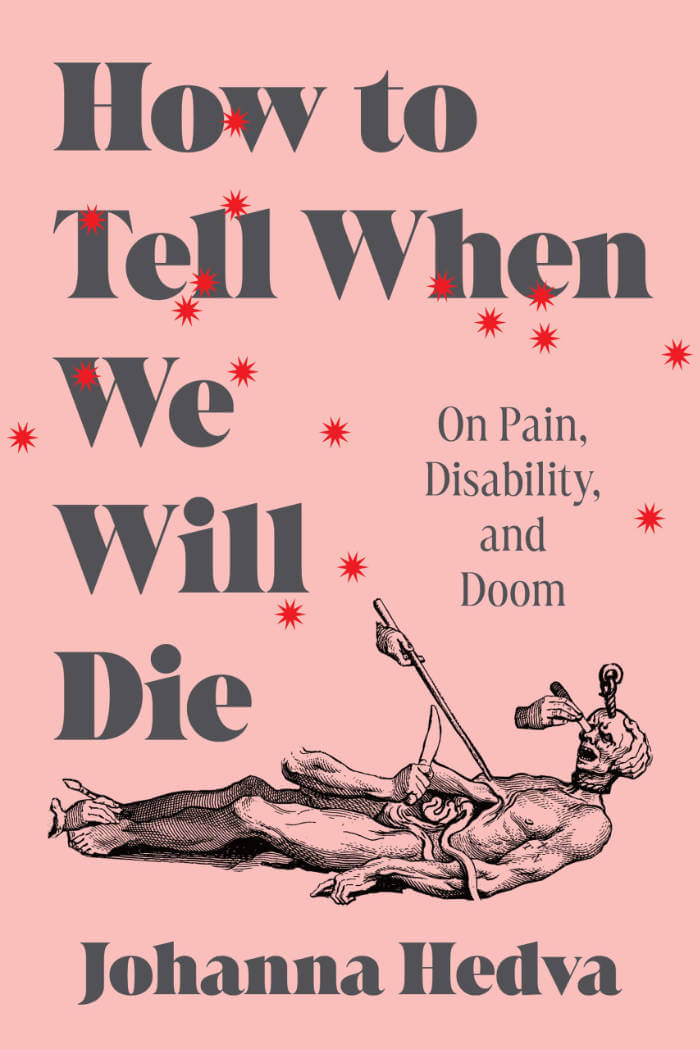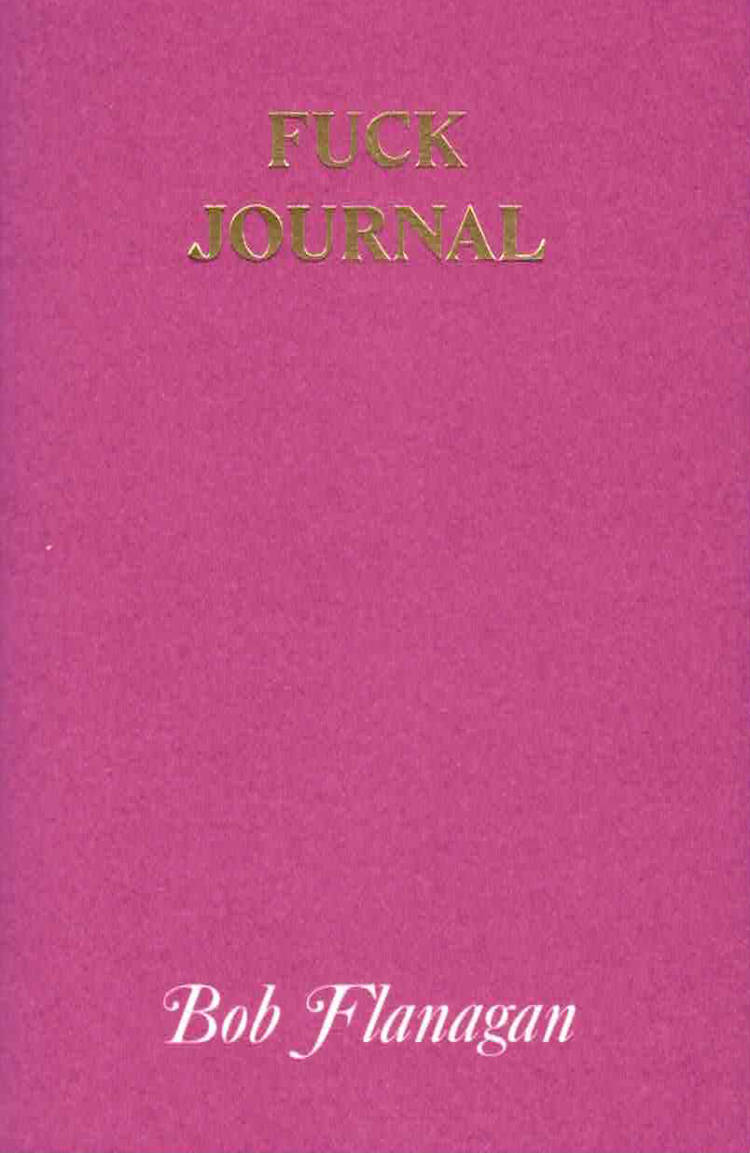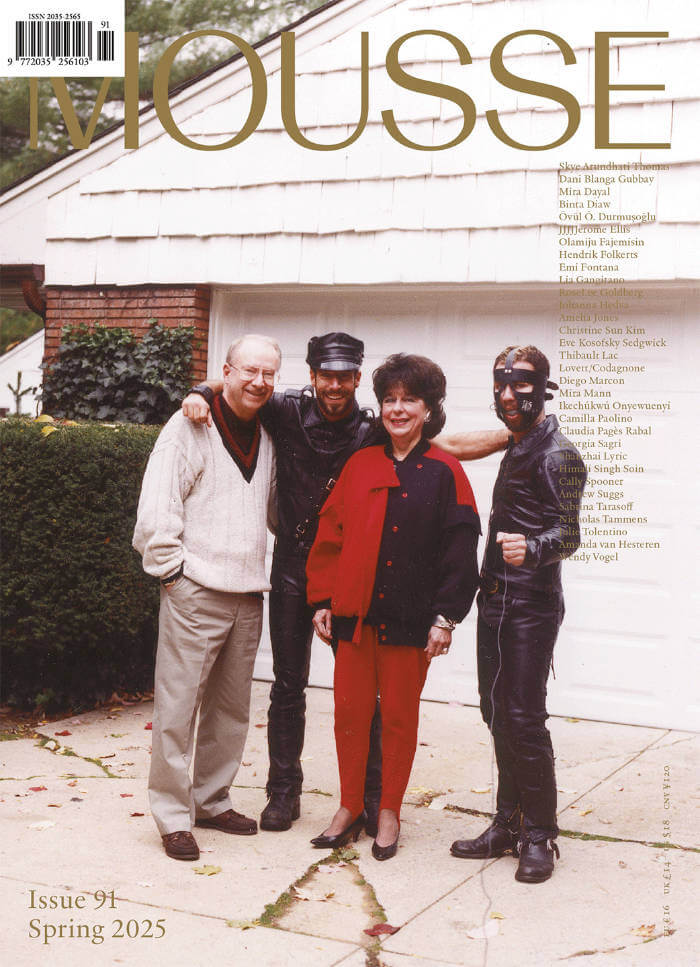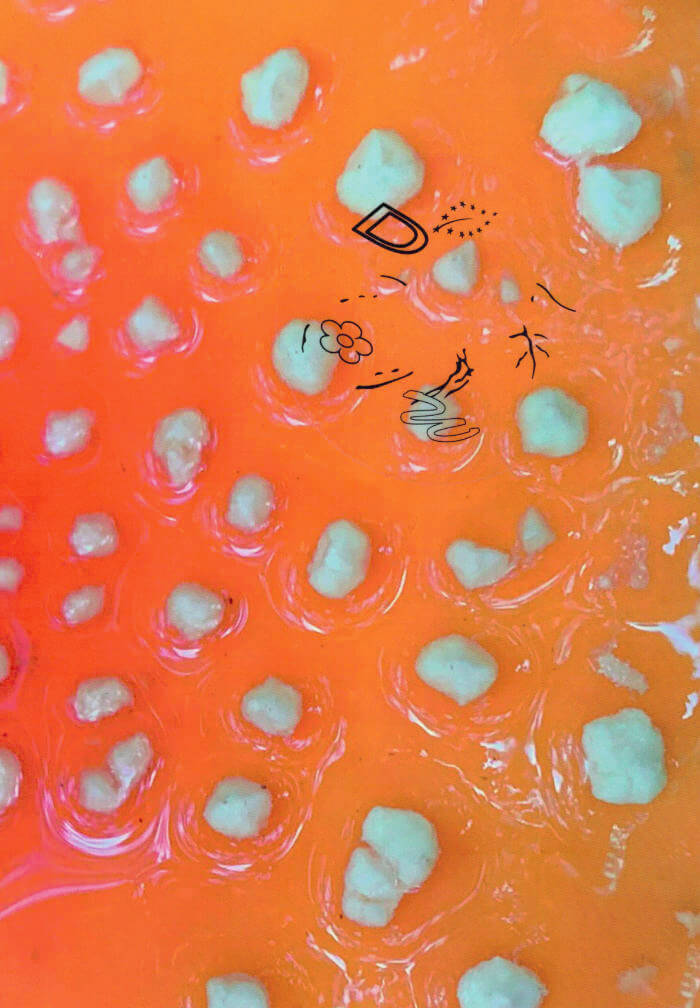Johanna Hedva
Johanna Hedva

How to Tell When We Will Die: On Pain, Disability, and Doom
The long-awaited essay collection from one of the most influential voices in disability activism that detonates a bomb in our collective understanding of care and illness, showing us that sickness is a fact of life.
In the wake of the 2014 Ferguson riots, and sick with a chronic condition that rendered them housebound, Johanna Hedva turned to the page to How do you throw a brick through the window of a bank if you can’t get out of bed? It was not long before this essay, “Sick Woman Theory”, became a seminal work on disability, because in reframing illness as not just a biological experience but a social one, Hedva argues that under capitalism—a system that limits our worth to the productivity of our bodies—we must reach for the revolutionary act of caring for ourselves and others.
How to Tell When We Will Die expands upon Hedva’s paradigm-shifting perspective in a series of slyly subversive and razor-sharp essays that range from the theoretical to the personal—from Deborah Levy and Susan Sontag to wrestling, kink, mysticism, death, and the color yellow. Drawing from their experiences with America’s byzantine healthcare system, and considering archetypes they call The Psychotic Woman, The Freak, and The Hag in Charge, Hedva offers a bracing indictment of the politics that exploit sickness—relying on and fueling ableism—to the detriment of us all.
With the insight of Anne Boyer’s The Undying and Leslie Jamison’s The Empathy Exams, and the wit of Samantha Irby, Hedva’s debut collection upends our collective understanding of disability. In their radical reimagining of a world where care and pain are symbiotic, and our bodies are allowed to live free and well, Hedva implores us to remember that illness is neither an inconvenience or inevitability, but an enlivening and elemental part of being alive.

Your Love Is Not Good
At an otherwise forgettable party in Los Angeles, a queer Korean American painter spots a woman who instantly controls the room: gorgeous and distant and utterly white, the centre of everyone’s attention. Haunted into adulthood by her Korean father’s abandonment of his family, as well as the spectre of her beguiling, abusive white mother, the painter finds herself caught in a perfect trap. She wants Hanne, or wants to be her, or to sully her, or destroy her, or consume her, or some confusion of all the above. Since she’s an artist, she will use art to get closer to Hanne, beginning a series of paintings with her new muse as model. As for Hanne, what does she want? Her whiteness seems sometimes as cruel as a new sheet of paper.
When the paintings of Hanne become a hit, resulting in the artist’s first sold-out show, she resolves to bring her new muse with her to Berlin, to continue their work, and her seduction. But, just when the painter is on the verge of her long sought-after breakthrough, a petition started by a Black performance artist begins making the rounds in the art community, calling for the boycott of major museums and art galleries for their imperialist and racist practices.
Torn between her desire to support the petition, to be a success, and to possess Hanne, the painter and her reality become more unstable and disorienting, unwilling to cut loose any one of her warring ambitions, yet unable to accommodate them all. Is it any wonder so many artists self-destruct so spectacularly? Is it perhaps just a bit exciting to think she could too?
Your Love Is Not Good stuffs queer explosive into the cracks between identity and aspiration, between desire and art, and revels in the raining debris.
Johanna Hedva is a Korean American writer, artist, and
musician who was raised in Los Angeles by a family of witches, and now lives in LA and Berlin. Hedva is the author of the essay 'Sick Woman Theory', originally published in 2016, which has now been translated into ten languages. Hedva is also the author of the novel On Hell, which was one of Dennis Cooper's favourite books of 2018, and the nonfiction collection Minerva the Miscarriage of the Brain. Their albums are The Sun and the Moon and Black Moon Lilith in Pisces in the 4th House.

Minerva - the Miscarriage of the Brain
Minerva the Miscarriage of the Brain collects a decade of work from artist, musician, and author of On Hell, Johanna Hedva. In plays, performances, an encyclopedia, essays, autohagiography, hypnagogic, and hypnapompic poems—in texts whose bodies drift and delight in form—Minerva tunnels into mysticism, madness, motherhood, and magic. Minerva gets dirty with the mess of gender and genius. She does the labor of sleep and dreams. She odysseys through Los Angeles, shapeshifting in stygian night and waking up to wail in the light.

On Hell
The book transcribes a body broken by American empire, that of ex-con Rafael Luis Estrada Requena, hacking itself away from contemporary society. Johanna Hedva, author of Sick Woman Theory, takes the ferocious compulsion to escape (from capitalism, from the limits of the body-machine, from Earth) and channels it into an evisceration of oppression and authority. Equal parts tender and brutal, romantic and furious, On Hell is a novel about myths that trick and resist totalitarianism.
And more

Fuck Journal
Since his on-screen “death” by erogenous torture device in Nine Inch Nails’ notorious “Happiness in Slavery” music video, writer and artist Bob Flanagan has been a looming legend in domains of art, pain and sex. First published by Hanuman Books in 1987, Fuck Journal chronicles Flanagan’s liaisons with his beloved romantic and artistic partner Sheree Rose over the course of a year.
Composed at Rose’s prompting and anticipating Flanagan’s extraordinary Pain Journal, the volume is so direct in its account of the couple’s conjugal life that the Indian authorities tossed its original print run into the ocean before the books could ship from Chennai to New York. By luck, 300 copies which had traveled with the editors to the US remained in circulation: an origin story that chimes with Flanagan’s aura of irreverence. Fuck Journal is characterized by a transfixing rhythm of total divulsion, a document of union amid, and through, pain with resonances in current discourses around sadomasochistic desire, crip experience, gender politics and beyond.
Based in Southern California, Bob Flanagan (1952-1996) was an provocateur of the highest order, known for poems and performances centering on BDSM activity and living with cystic fibrosis. Famously featured in censored videos for Danzig and Nine Inch Nails, Flanagan achieved a unique pitch of sexual spectacle and tender expression through visceral collaborations with the photographer, artist and dominatrix Sheree Rose. Flanagan’s published writings include Pain Journal (1996) and the anthology Fun to be dead: The Poems of Bob Flanagan (2024), edited by Sabrina Tarasoff.
The steward of Flanagan’s legacy and an icon in her own right, the photographer and performance artist Sheree Rose has been a leading figure in Los Angeles underground culture since the 1980s. Through her partnership with Flanagan and ongoing projects, Rose has brought to the fore a new form of heterosexual politics, an erotics of intimacy as it intersects with the personal and social.
Johanna Hedva is a Korean American writer, artist, and musician from Los Angeles. Their most recent essay collection is How To Tell When We Will Die: On Pain, Disability, and Doom. They are also the author of the novels Your Love Is Not Good and On Hell. Their art has been exhibited internationally, and their albums are Black Moon Lilith in Pisces in the 4th House and The Sun and the Moon.

Mousse #91
Lovett/Codagnone; Sabrina Tarasoff on Diego Marcon; Ikechúkwú Onyewuenyi on JJJJJerome Ellis; Cally Spooner and Hendrik Folkerts; Himali Singh Soin; Wendy Vogel interviews pioneering art historian, curator, and founder of Performa biennial RoseLee Goldberg; Shanzhai Lyric; Amelia Jones on queer feminist literary critic Eve Kosofsky Sedgwick; Dani Blanga Gubbay; Amanda van Hesteren by Olamiju Fajemisin; Thibault Lac by Skye Arundhati Thomas; Mira Mann by Nicholas Tammens; Claudia Pagès Rabal by Övül Ö. Durmuşoğlu; Binta Diaw by Camilla Paolino; Christine Sun Kim and Johanna Hedva discuss "mainstreaming," ableism, and the perils of "care"; books by Georgia Sagri...
Mousse is a bimonthly contemporary art magazine. Established in 2006, Mousse contains interviews, conversations, and essays by some of the most important figures in international criticism, visual arts, and curating today, alternated with a series of distinctive articles in a unique tabloid format.

Bodies of Sound: Becoming a Feminist Ear
‘I am concerned with the power of sound! and what it can do to the body and the mind,’ wrote composer Pauline Oliveros. In the body, histories and politics come together with sound and listening, memory and feeling. Bodies of Sound offers a resonant exploration of feminist sonic cultures and radical listening in over fifty contributions. In this book of echoes, a variety of forms – from essays to text scores to art, fiction and memoir – speak across gender, ways of knowing, witnessing, sounding and voicing, translation, displacement, violence and peace.
With contributions from:
Sara Ahmed, Ximena Alarcón, Svetlana Alexievich, Ain Bailey & Frances Morgan, Anna Barham, Xenia Benivolski, Leanne Betasamosake Simpson & Kite, Elena Biserna, Karen Barad & Black Quantum Futurism, Anne Bourne, Daniela Cascella, Theresa Hak Kyung Cha, Maria Chávez, Don Mee Choi, Carson Cole Arthur, Petero Kalulé & AM Kanngieser, Lindsay Cooper, Julia Eckhardt, Lucia Farinati & Claudia Firth, Ella Finer, Annie Goh, Louise Gray, Christina Hazboun, Johanna Hedva, Sarah Hennies, Tomoko Hojo, IONE, Lee Ingleton, Hannah Catherine Jones, Christine Sun Kim, Nat Lall, Cathy Lane, Jeanne Lee & Lona Foote, Marysia Lewandowska, Annea Lockwood & Jennifer Lucy Allan, Cannach MacBride, Elaine Mitchener & Hannah Kendall, Alison O'Daniel, Naomi Okabe, Pauline Oliveros, Daphne Oram, Gascia Ouzounian, Holly Pester, Roy Claire Potter, Anna Raimondo, Tara Rodgers, Aura Satz & Barbara London, Shortwave Collective, Sisters of the Order of Celestial Nephology, Sop, Syma Tariq, Marie Thompson, Trinh T. Minh-ha & Stoffel Debuysere, Salomé Voegelin

Itinéraires Fantômes (box set)
Hélène Cixous, Alexandra Grant
Itinéraires Fantômes is an oracle deck created by Alexandra Grant with Hélène Cixous in celebration of H. Cixous' work.
The Itinéraires Fantômes deck consists of 72 cards in six categories: animots, creatures, and entities that include Those from Below, Those from Above, Those Who Fly/Steal, who travel via Portals, manipulate Messages and Symbols, and have Superpowers. The cards are accompanied by a booklet in English and French.
The images on these cards come from family, friends, and artists who have been inspired by Hélène Cixous' writing. Artists include: Adel Abdessemed, Pierre Alechinsky, Sara Barker, Gabrielle Berger, Louise Bourgeois, Leonardo Bravo, Maria Bussmann, Sarah Cain, Lewis Carroll, Bertrand Charneau, Maria Chevska, Michael Kennedy Costa, Laura Darbutaitė, Tacita Dean, Edgar Fabián Frías, Jeffrey Gibson, Francisco Goya, Alexandra Grant, Mathew Hale, Simon Hantaï, Johanna Hedva, Roni Horn, Victor Hugo, Hanna Hur, Franz Kafka, YeRin Kim, Lynn Marie Kirby, Jean-Jacques Lemêtre, Colin Lemoine, Laure Prouvost, Elsa Prudent, Addy Rabinovitch, Keanu Reeves, Cindy Rehm, Saranya Siegel-Berger, Shinique Smith, Nancy Spero, Luc Tuymans, Unyimeabasi Udoh, Roger Viollet, Anna Winger.

Fortune Teller
Sticky Fingers' Fortune Teller features wisdom from McKenzie Wark, Octavia E. Butler, Kate Zambreno, bell hooks, Clarice Lispector, Eileen Myles, Kathy Acker, Johanna Hedva, Lou Sullivan, Audre Lorde, June Jordan, and Anne Boyer.
A3, single colour risograph

Fieldnotes: Issue 4
The fourth issue of FIELDNOTES contains new work by:
Adeola Titiloye, ajw, Fanny Howe, Will Alexander, Michael O’Mahony, Agnieszka Szczotka, Renee Gladman & Isabel Mallet, Can Xue, Karen Gernant & Chen Zeping, Tony Brooks, Nwuguru Chidiebere Sullivan, Mat Jenner, Alba Schloessingk, Camille Roy, Pete Segall, Johanna Hedva, Beihua Guo, Cedar Sigo, KP Culver
FIELDNOTES is an artist-run publishing project based in Newham in east London, aiming to promote and support non-conforming creative practices that pioneer new cultural forms.

Spike #71 – Couples
For the latest Spike – #71: Couples—we're seeing double. This one is dedicated to partnerships in life, love, law, and labour. Whether you're a serial monogamist, married to your job, or sublimating your crushy feelings into all that you create, it's tough to deny the role that romance—or its absence—plays in shaping our subjectivities.
Might coupling be key to seeing beyond the self, opening us up to a more expansive, collaborative (co)existence? And do relationship breakdowns parallel wider social strife? Can the dusty old dyad be reconceived as radical? What happens when art-world couples blend business and pleasure?
Curl up with your soul mate—or settle into singledom—and grab a copy to read about the uses of love beyond love; the motivation posed by muses and rivals; psychoanalytic takes on partners' promises; along with artist-couples, curatorial duos, rom-com heroes, spectres, fembots, and beyond.
With Chris Kraus, Asa Seresin, Whitney Mallett, Alenka Zupančič, Johanna Hedva, Sam Kriss, Calla Henkel & Max Pitegoff, Genesis & Lady Jaye Breyer P-Orridge, Darian Leader & Jamieson Webster, Eva & Franco Mattes, Tea Hacic-Vlahovic, and many more.
Founded by the artist Rita Vitorelli in 2004, Spike (Spike Art Quarterly) is a quarterly magazine on contemporary art published in English which aims at sustaining a vigorous, independent, and meaningful art criticism. At the heart of each issue are feature essays by leading critics and curators on artists making work that plays a significant role in current debates. Situated between art theory and practice and ranging far beyond its editorial base in Vienna and Berlin, Spike is both rigorously academic and stylishly essayistic. Spike's renowned pool of contributing writers, artists, collectors and gallerists observe and reflect on contemporary art and analyse international developments in contemporary culture, offering its readers both intimacy and immediacy through an unusually open editorial approach that is not afraid of controversy and provocation.

DAISYWORLD MAGAZINE #3
ROT, LANGUAGE & A STRAY BUTTERFLY
CONTRIBUTORS Eady van Acker, Anouk Asselineau & Myrto Vratsanou, Britt Browne, Finca Tierra Negra, Yuri Hasegawa, Celine Caly, Aimilia Efthimiou & Comfy Shrooms, Paige Emery, Elizaveta Federmesser, Edwin Godínez, Meg Hadfield, Freya Häberlein, Johanna Hedva, Zsófia Jakab, Lijuan Klassen, Marijn van der Leeuw, Juliette Lizotte, Niklaus Mettler & Anja Wille-Schori, Hatty Nestor, Kamila Sipika, Zazie Stevens & Alex Valentina.
DAISYWORLD MAGAZINE is a seasonal art publication on perception, the sensory, the non-human, ecology & erotica with an emphasis on interconnectedness. The artist's intimate knowledge based on observation, questioning anthropocentrism through beauty & language. Reflecting on the past season while softly moving into the next, each issue launches in-between seasons; appreciating experience, transition, and metamorphosis instead of anticipating the next big thing
Cover image: Zazie Stevens

Where Are the Tiny Revolts?
Anthony Huberman, Jeanne Gerrity
Where are the tiny revolts? is the first book in a new annual series published by CCA Wattis Institute, a contemporary art center and research institute in San Francisco. Each book in the series is driven by a central question: what are we learning from artists today? Unconnected to an exhibition program, Where are the tiny revolts? is rooted in the Wattis's artist-driven research institute. It is a place to explore and share some of the texts and visual work that emerge over the course of an entire year of discussions and public programs. Instead of providing documentation of projects with artists, Where are the tiny revolts? offers other ideas, voices, and references generated by conversations with and about artists.
The first book in the series, informed by themes related to the work of Dodie Bellamy, revolves around questions related to contemporary forms of feminism and sexualities, the rebirth of the author, and ways in which vulnerability, perversion, vulgarity, and self-exposure can be forms of empowerment. The texts cover a broad array of styles, including memoir, theoretical essay, art historical analysis, poetry, and fiction. The visual elements are equally diverse, ranging from photographs to collage to drawing.
Texts by Sara Ahmed, Nicole Archer, Georges Bataille, Dodie Bellamy, Michele Carlson, Thomas Clerc, Combahee River Collective, Bob Flanagan, Ursula K. Le Guin, Johanna Hedva, Glen Helfand, Juliana Huxtable, Alex Kitnick, Julia Kristeva, Audre Lorde, Lisa Robertson; contributions by Marcela Pardo Ariza, Justin G. Binek, Kaucyila Brooke, Tammy Rae Carland, Mary Beth Edelson, Mike Kuchar, Anne McGuire, Patrick Staff, Frances Stark, Rosemarie Trockel.

Parrhesiades Vol. 1
Parrhesiades is a multi-platform project, established in 2019 by curator Lynton Talbot to work with artists for whom language, either written spoken or otherwise performed is an essential part of their practice. Together with the artist, parrhesiades develops a single new work that exists across multiple platforms. With contributions by Quinn Latimer, Sung Tieu, Jesper List Thomsen, Elaine Cameron-Weir, Johanna Hedva, Eva Gold and Cally Spooner.

Anthology of Failure
GenderFail: An Anthology On Failure is the first in a series of publications that look into various concepts of failure from the perspectives of artists, activists, writers, and curators. The failures discussed in this publication come from various different places - from personal, political, institutional, and collective sources. Each participant was invited to contribute a work surrounding failure - especially as it pertains to their own experiences - to expand upon topics of ableism, mental health, passing, whiteness, colonization, police brutality and other illustrations of failure put onto us by dominant culture. This resulting collection might fail to articulate a cohesive interpretation of something as complex as failure, but will hopefully incite a collective consciousness that is as messy as it is thought provoking.
Contributions by: Manuel Arturo, Abreu, American Artist, Sasha Costanza-Chock, Demian DinéYazhi, Johanna Hedva, Nicole Killian, Andrea Liu, Be Oakley, Nate Pyper, Sable Elyse smith, Alok Vaid-Menon, Augustine Zegers.